|
My Links
|
CVN-68 Nimitz-class
Twelve aircraft carriers form the centerpiece of US Naval global forward presence, deterrence, crisis response, and warfighting. In addition to their power-projection role, they serve as joint command platforms in the worldwide command-and-control network. The carrier air wing can destroy enemy aircraft, ships, submarines, and land targets, or lay mines hundreds of miles from the ship. Aircraft are used to conduct strikes, support land battles, protect the battle group or other friendly shipping, implement a sea or air blockade. The air wing provides a visible presence to demonstrate American power and resolve in a crisis. The ship normally operates as the centerpiece of a carrier battle group commanded by a flag officer embarked in the carrier and consisting of four to six other ships, including guided missile cruisers, destroyers, frigates, replenishment ships and submarines. The NIMITZ-class carriers are a floating airport, capable of launching as many as four aircraft a minute. The ship's four catapults and four arresting gear engines enable her to launch and recover aircraft rapidly and simultaneously. The ships carry seven different types of aircraft with a total complement of more than 80 planes. During flight operations, the flight deck of 4.5 acres is a scene of intense activity, with crew, aircraft and other equipment functioning as a well-rehearsed and carefully choreographed team to ensure both efficiency and safety. Four aircraft elevators, each the size of two average city lots, bring the aircraft to the flight deck from the hangars below. Small tractors spot the planes on the flight deck. Aviation fuel is pumped up from tanks below, and bombs and rockets are brought up from the magazines. Powerful steam catapults (affectionately known as "Fat Cats") can accelerate 37-ton jets from zero to a safe flight speed of up to 180 miles per hour in about 300 feet and in less than three seconds. The weight of each aircraft determines the amount of thrust provided by the catapult. When landing, pilots use a system of lenses to guide the aircraft "down the slope," the correct glide path for landing. The four arresting wires, each consisting of two-inch thick wire cables connected to hydraulic rams below decks, drag landing aircraft going as fast as 150 miles per hour to a stop in less than 400 feet. High in the island, seven stories above the flight deck, the "Air Boss" and his staff coordinate the entire operation, which is carefully monitored from the flight deck level as well as by the Captain on the ship's bridge. The various functions of the flight deck crew are identified by the colors they wear: yellow for officers and aircraft directors; purple for fuel handlers; green for catapult and arresting gear crews; blue for tractor drivers; brown for chock and chain runners; and red for crash and salvage teams and the ordnance handlers. The NIMITZ-class self-defense measures include: missiles, guns, and electronic warfare. The NATO Sea Sparrow Missile System is comprised of two launchers with eight missiles each. Sea Sparrow is a radar-guided, short-to-medium range missile capable of engaging aircraft and cruise missiles. NIMITZ-class also has Close-In Weapon System mounts for short range defense against aircraft or missiles. Each mount has its own search and track radar, and a six-barrel, 20-millimeter Gatling gun capable of firing 3,000 rounds per minute CVN-68 Nimitz-class Photos 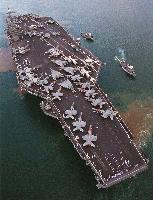
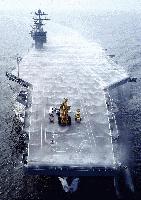
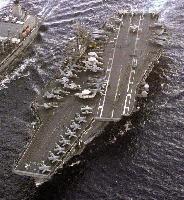
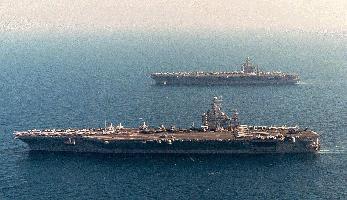



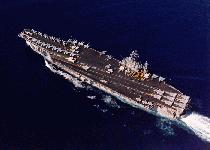

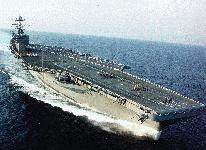
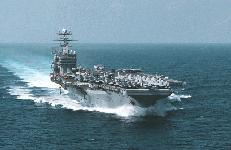
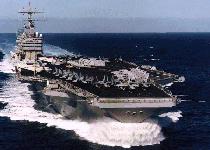
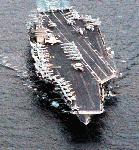
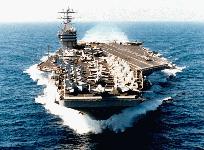

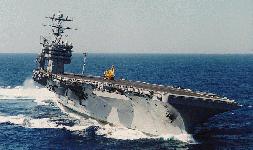
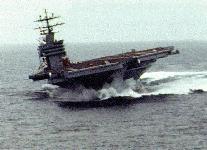
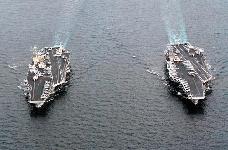
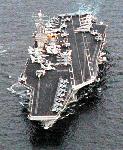



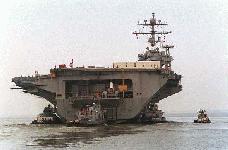
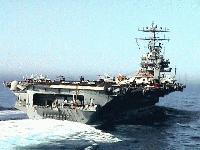

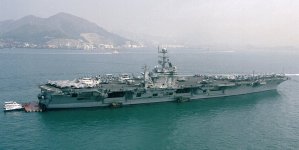
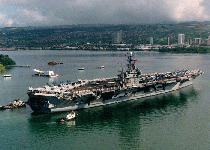
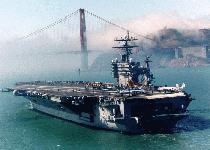

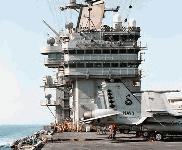
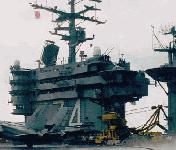

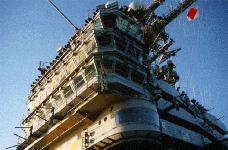
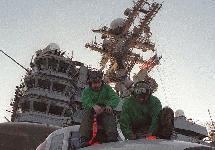
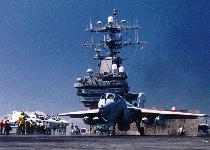
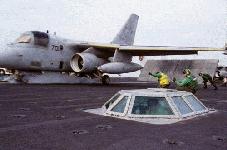
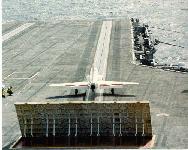
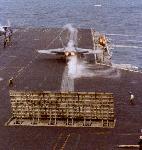


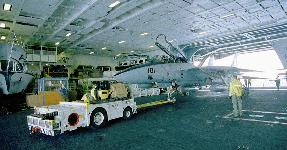
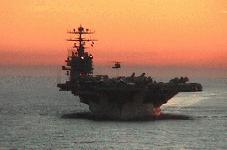
|
| Copyright © 2002, Josh Riccio, All Rights Reserved. | |